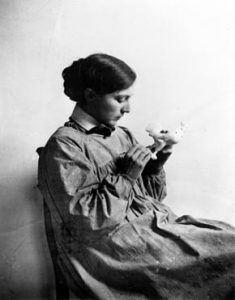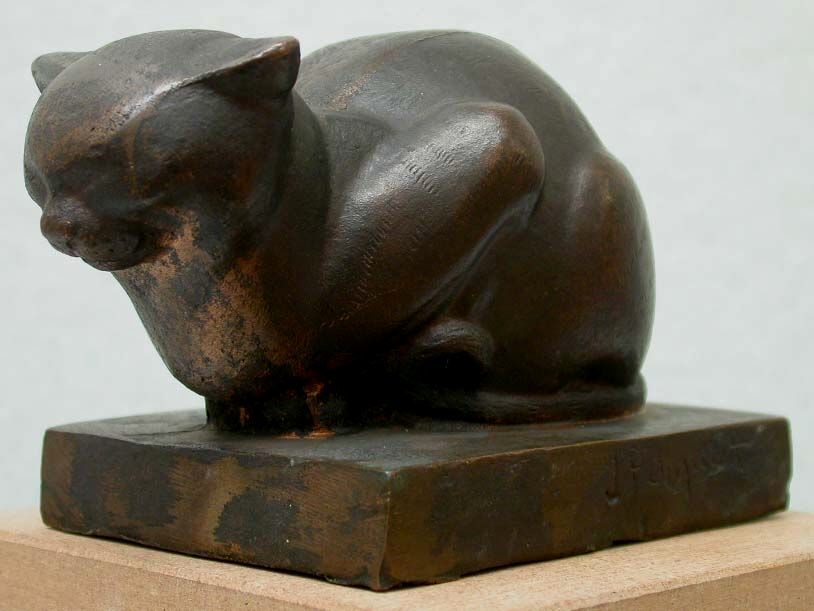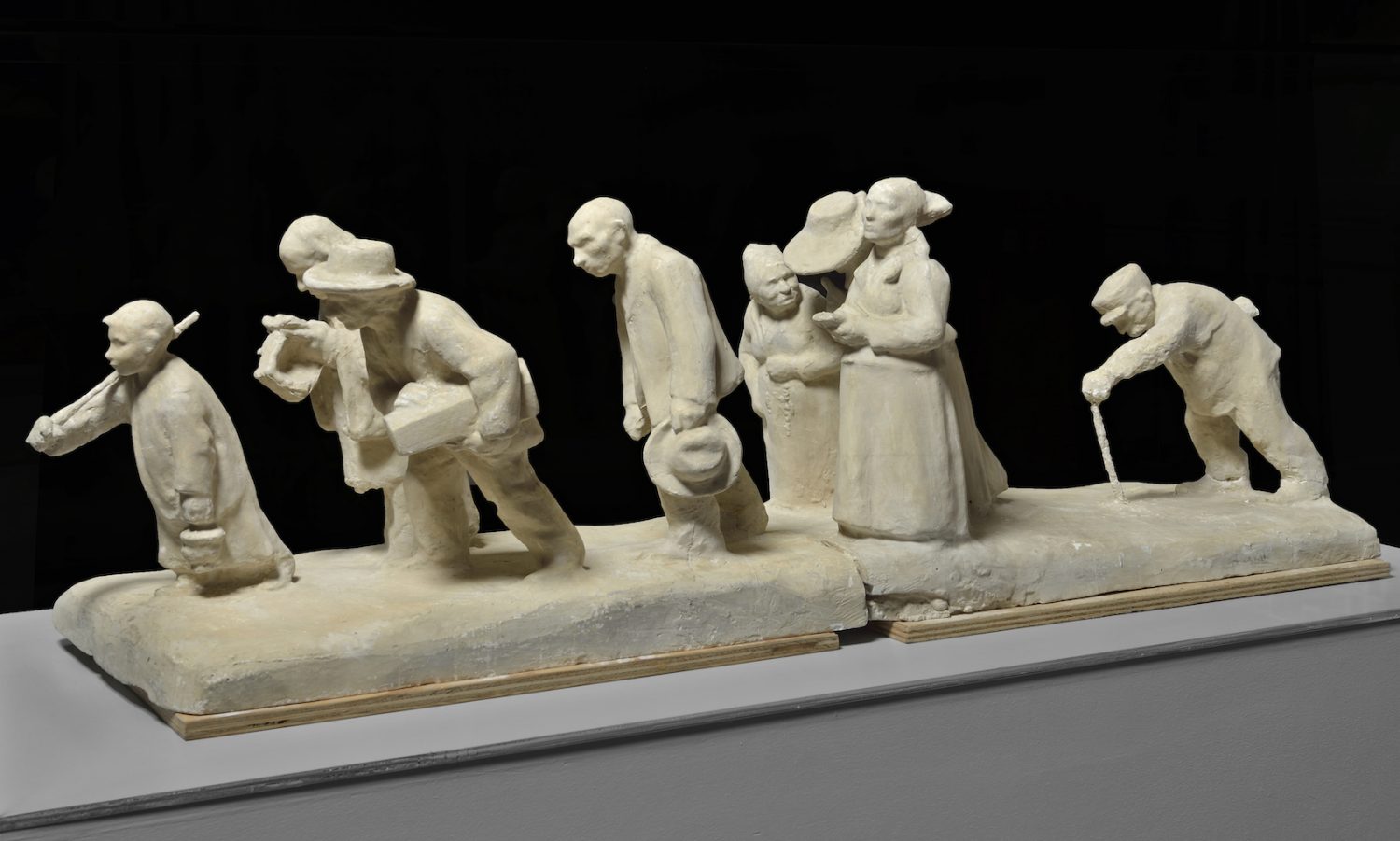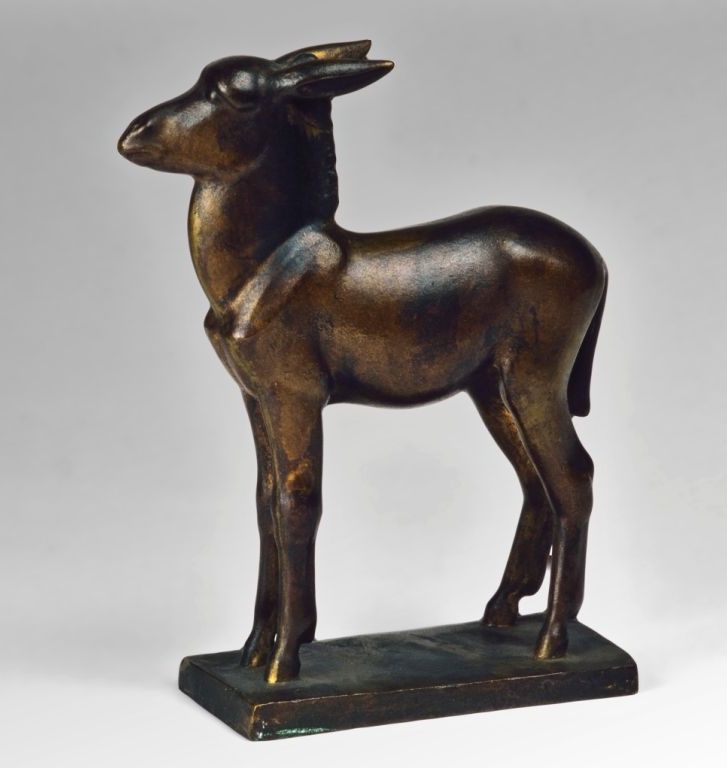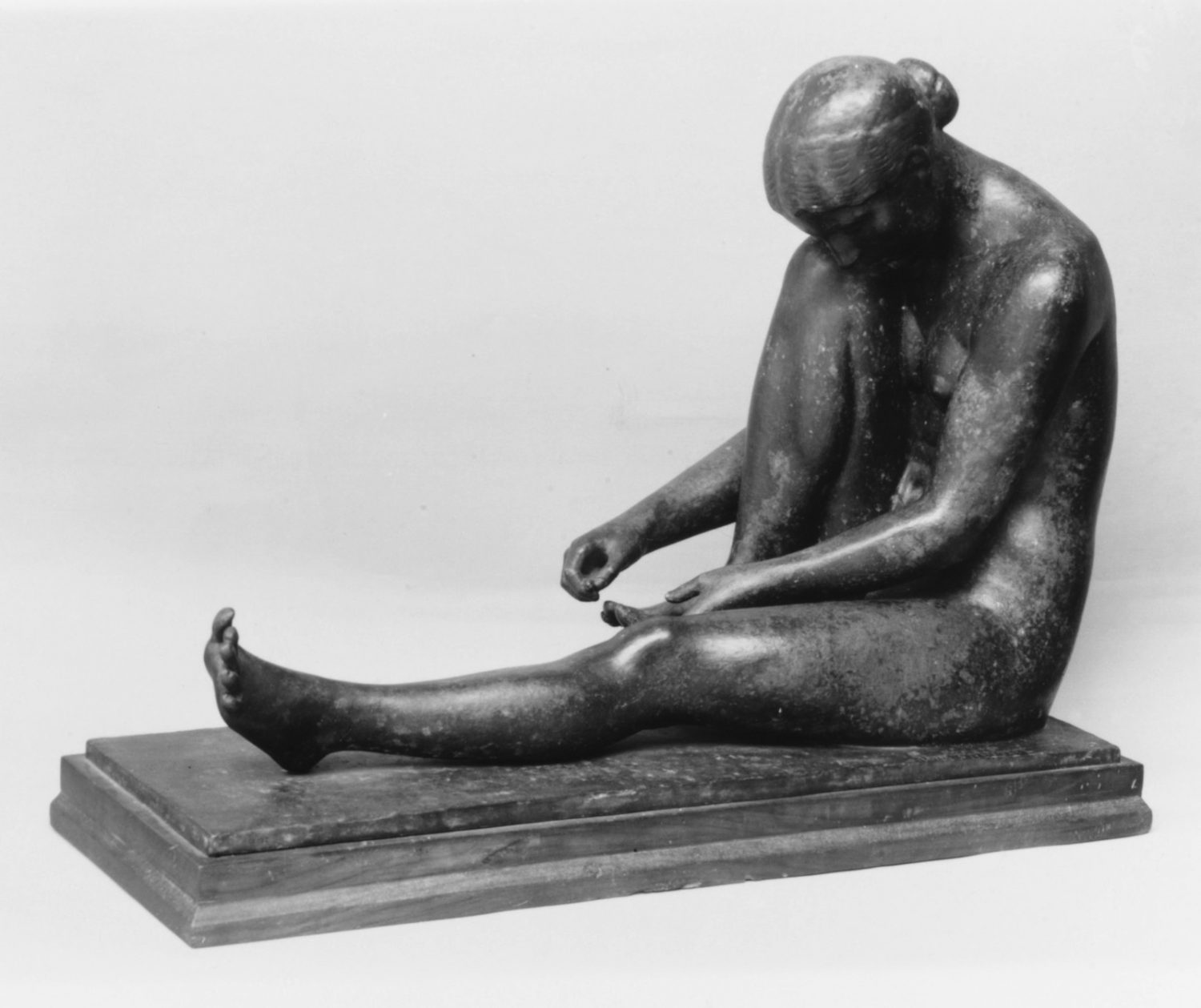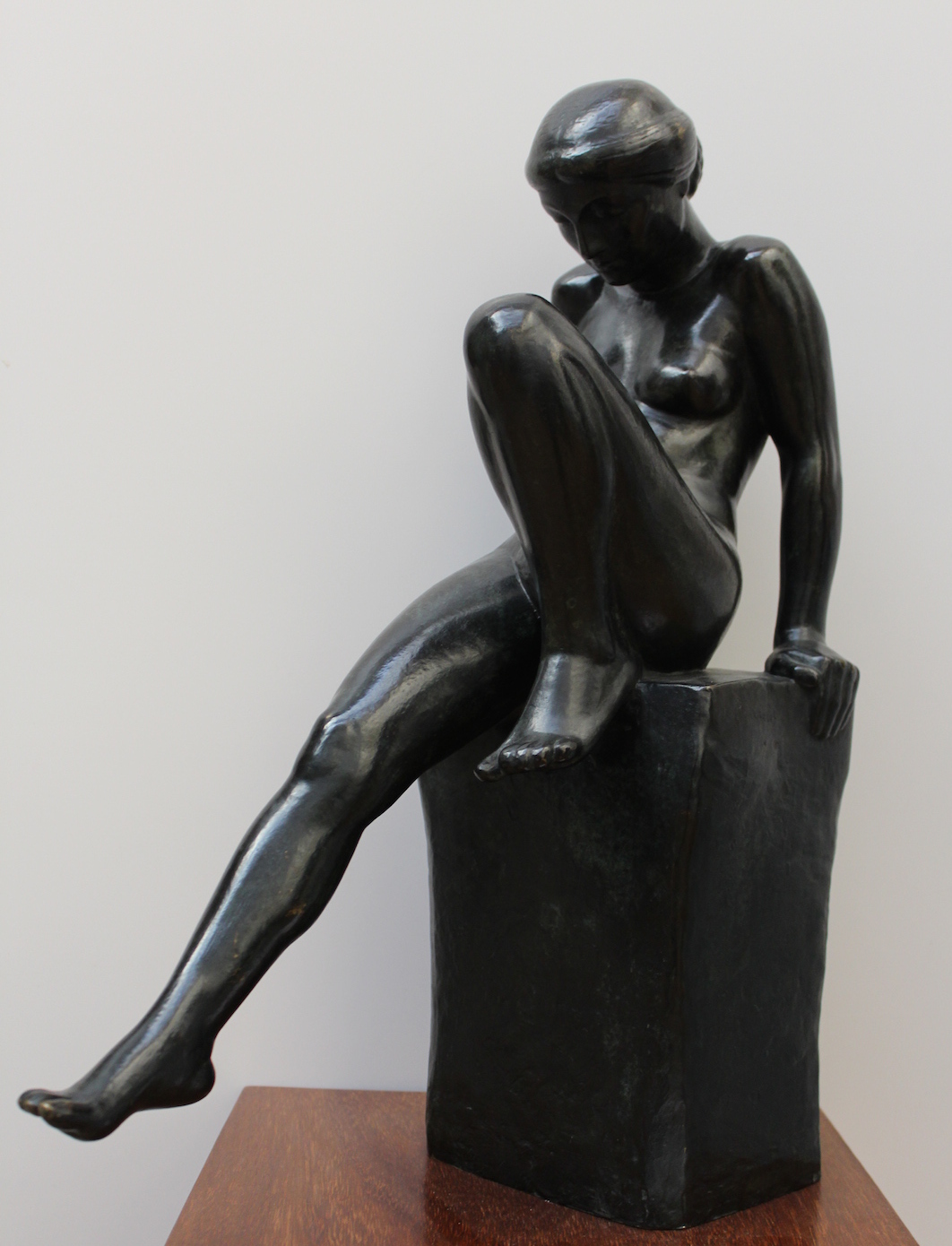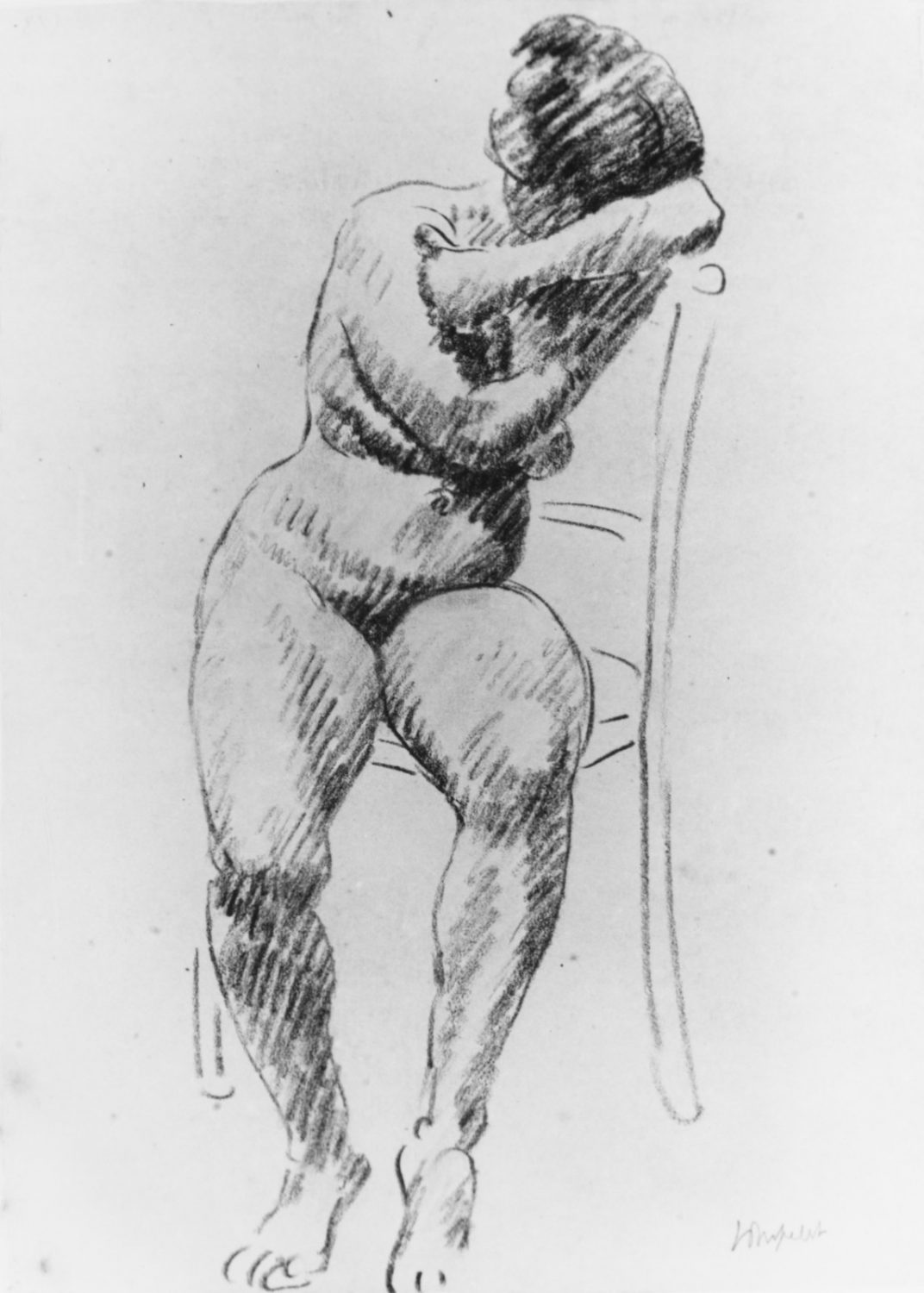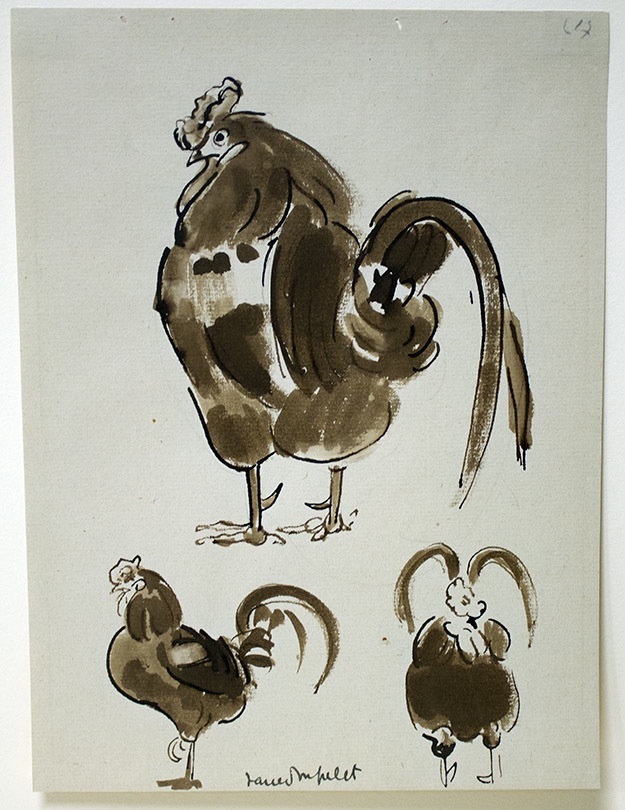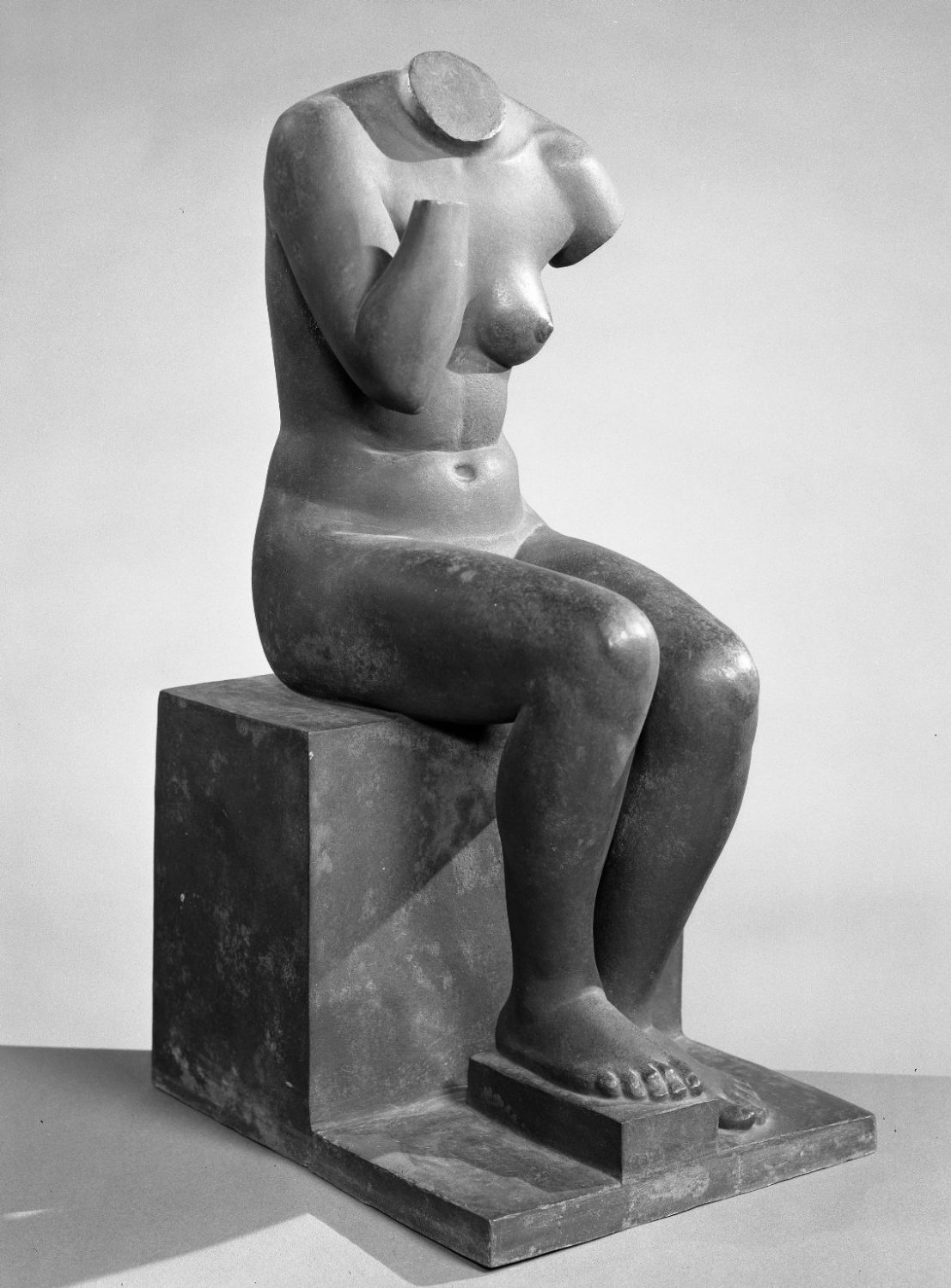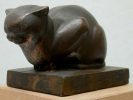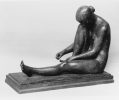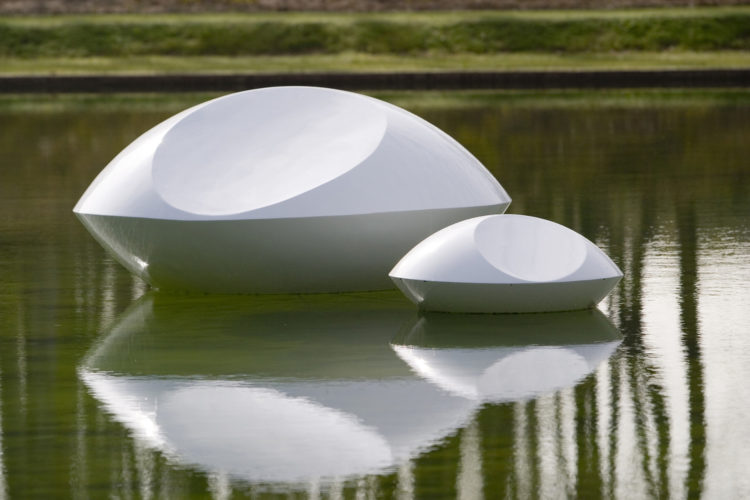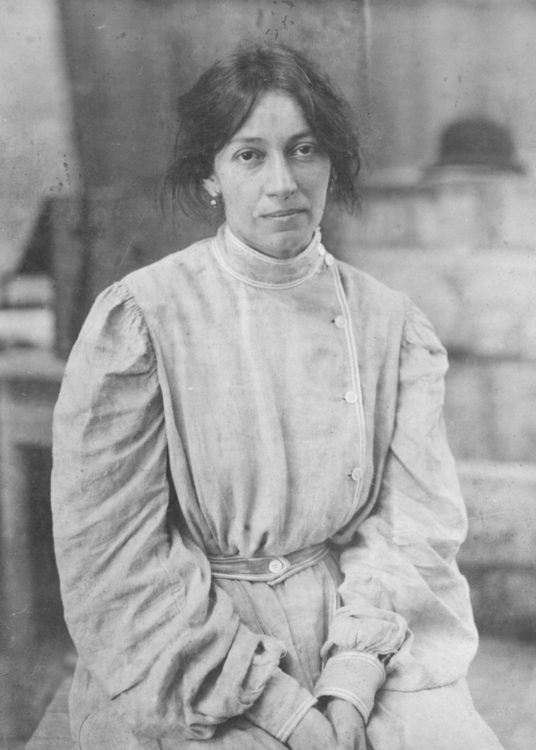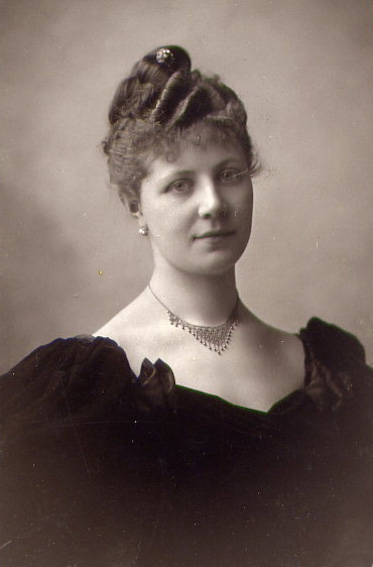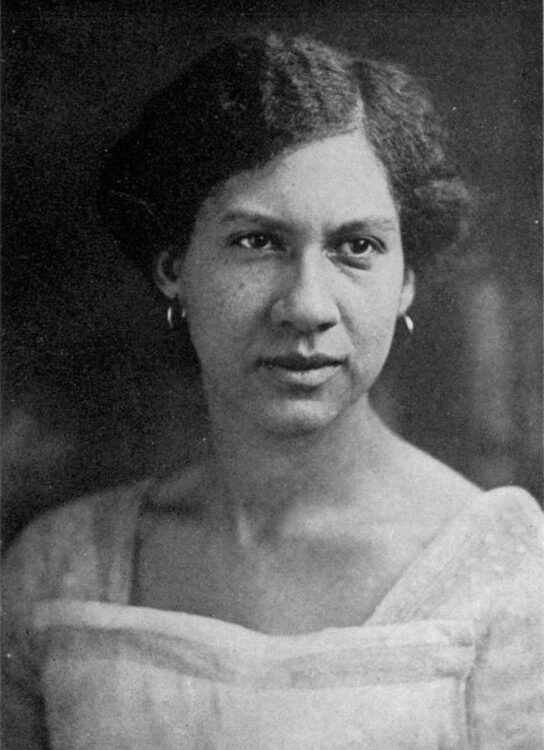Jane Poupelet
Kunstler Charles, Jane Poupelet, Paris, G. Crès, 1930
→Rivière Anne (ed.), Jane Poupelet : 1874-1932 : “la beauté dans la simplicité”, exh. cat., La Piscine, Roubaix; musée des beaux-arts, Bordeaux; Musée Despiau-Wlérich, Mont-de-Marsan (2005 – 2006), Paris, Gallimard, 2005
Jane Poupelet : 1874-1932 : “la beauté dans la simplicité”, La Piscine, Roubaix ; musée des beaux-arts, Bordeaux ; Musée Despiau-Wlérich, Mont-de-Marsan, 2005 – 2006
French sculptress.
Trained in artistic circles still largely closed to women, Jane Poupelet attended ground-breaking courses at the Beaux-Arts in Bordeaux, then studied briefly at the more conservative Académie Julian in Paris, before refining her style under the direction of the sculptor Lucien Schnegg. She began her career under the male pseudonym Simon de la Vergne (1899–1901). She initially produced single copies of small figures that she plunged in bronze but chased and patinated herself—at the time an uncommon practice. Her best-known works today are her female nudes. With full, sensual forms (she rebelled against the damaging effects of the corset), her figures are simply posed but of accurate and precise anatomical structure and with an austere charm that accords with her admiration for the ancient statuary in Naples and the recommendations of Lucien Schnegg to return to the Greek axiom of “architectural cadences”, i.e. the basing of the proportions of the human body on the proportions of architecture. An example is her Femme à sa toilette (Woman at Bath Time, 1907–10).
Her animal sculptures charmed the American public in particular and brought her a regular income but also diverged from the specialized genre of noble animals. Poupelet preferred to depict domestic or farm animals Ânon (Ass’s Foal, 1909) animals in geometric or slightly schematic forms. Her many, more realist, drawings deal with the same subjects and her sculptures of female figures during the 1920s represent women confronted by maternity and aging; she also produced a series of briskly sketched drawings of fowl in movement Sept croquis de poules (Seven Sketches of Hens). World War I interrupted her practice, though her work had already won recognition. At the end of the war she joined the American sculptress Anna Ladd (1878–1939) and modelled masks to give the appearance of a face to the “gueules cassées” (facially disfigured servicemen) at the Val-de-Grâce military hospital. This work called on traditional techniques of portraiture (casting from life, and reconstitution of the face from photographs, as was often done by portrait sculptors and, in particular, sculptors creating posthumous portraits). This medical application of plastic modelling continued to be used during the earliest days of “plastic” surgery. During the post-war period, Jane Poupelet returned to executing small bronzes, this time of an allegorical nature.
© Éditions des femmes – Antoinette Fouque, 2013
© Archives of Women Artists, Research and Exhibitions, 2017



